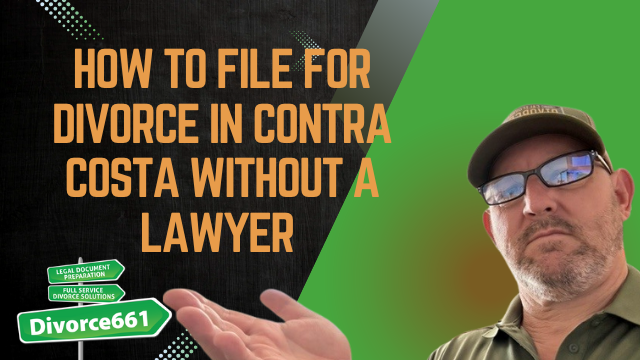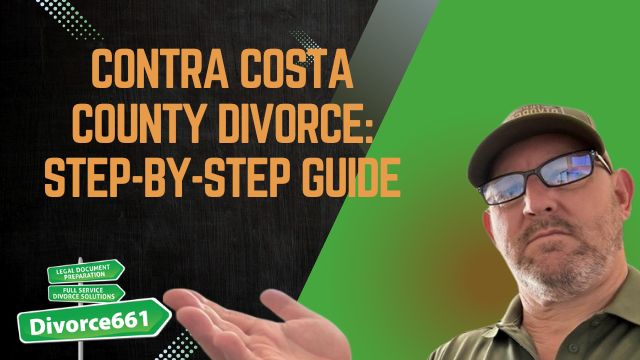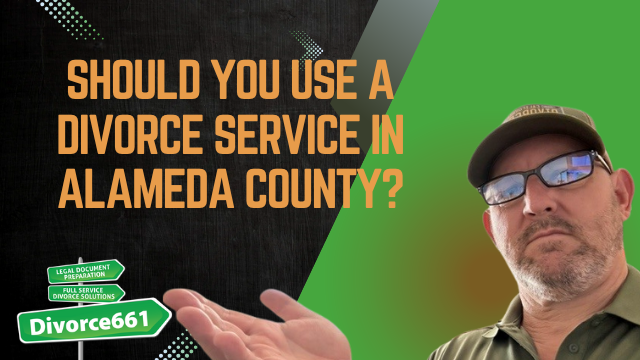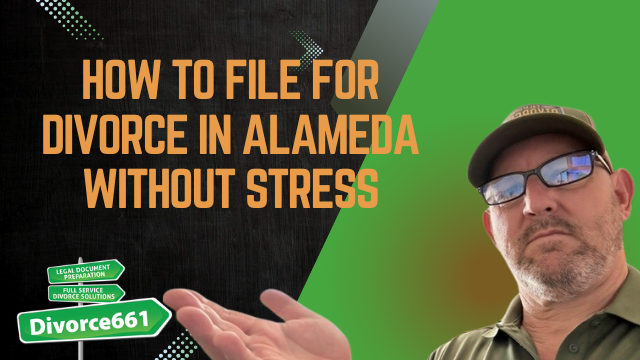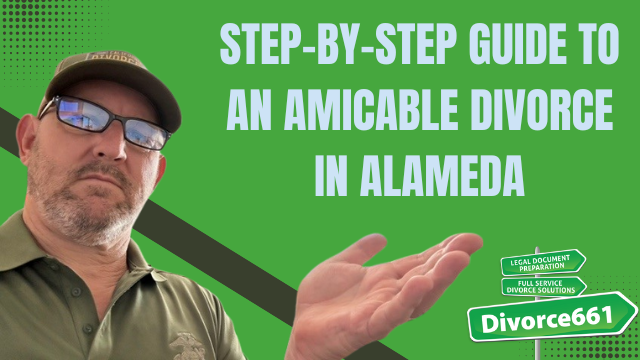How to File for Divorce in Contra Costa Without a Lawyer | Contra Costa Divorce
I’m Tim Blankenship from Divorce661. If you’re thinking about filing for divorce in Contra Costa County but want to avoid the expense of an attorney, you can represent yourself — commonly called filing “in pro per.” In this guide I’ll walk you through the practical steps I cover in my video: how to e-file your case, properly serve your spouse, exchange financial disclosures, and submit a final judgment without costly mistakes.
Quick overview: the path to a smooth, lawyer-free divorce
- Decide if an amicable, self-filed divorce is right for your situation (pro per).
- Prepare and e-file your initial paperwork with the court.
- Have your spouse properly served and file proof of service.
- Exchange complete financial disclosures to avoid surprises later.
- Submit an accurate final judgment to close the case.
Should you represent yourself (file “in pro per”)?
California law permits you to file for divorce without a lawyer. Filing in pro per can save you money — especially when both spouses are reasonably amicable and willing to cooperate. That said, an amicable approach is crucial: when both parties work together, the process is faster, cheaper, and less stressful.
When it makes sense
- Simple asset and debt division or a clear premarital agreement
- No complex custody disputes or high-conflict issues
- Both parties are willing to exchange information and sign agreements
Step 1 — Prepare and e-file your initial paperwork
Getting the paperwork right from the start sets the whole process in motion. Most delays come from incomplete or incorrect initial filings.
Key points:
- Complete every required form accurately — names, dates, addresses, and signatures must be correct.
- Many counties use e-filing for family law cases. Make sure you follow Contra Costa County’s e-filing rules and upload the required documents in the correct format.
- Common errors that cause rejections: missing signatures, incorrect case titles, wrong filing fees, and omitted attachments.
Step 2 — Serve your spouse correctly
After filing, your spouse must be officially notified. Proper service ensures your case moves forward and protects the court’s jurisdiction over the matter.
What to keep in mind:
- Service must be done according to California rules — by a non-involved adult, process server, or peace officer, unless your spouse waives formal service.
- File proof of service with the court promptly. A mistake or omission here can halt or invalidate parts of your process.
- If your spouse agrees to sign a waiver of service, that can simplify things and speed up the timeline.
Step 3 — Exchange financial disclosures
Full financial disclosure is required in California. Being transparent prevents future disputes and is essential for a fair settlement.
What to exchange:
- Income statements (pay stubs, tax returns)
- Lists of assets and debts (bank accounts, retirement, real estate, loans, credit cards)
- Completed forms required by the court (declaration of disclosure and supporting schedules)
Exchange documents on time and keep copies of everything you provide and receive. Missing or late disclosures are common reasons for contested hearings and delays.
Step 4 — Submit a clean final judgment
The final judgment closes your divorce. Accuracy here matters: even small errors can lead to rejections or a need to refile.
Before submitting the final judgment:
- Double-check names, dates, and descriptions of property division.
- Ensure that any agreements or orders are attached and correctly referenced.
- Confirm signatures, notarizations (if required), and that the judgment matches any stipulated settlement.
Real client story: small mistakes, big delays — and a fast fix
“Small mistakes in her paperwork led to big delays.”
A client tried to e-file her judgment without professional help and the court rejected it multiple times. The problems were minor — missing initials, formatting errors, and an unsigned page — but they were enough to stop the case. We corrected the errors, refiled everything properly, and the case was approved in under two weeks. The lesson: accuracy saves time, money, and frustration.
Common mistakes to avoid
- Incomplete forms or missing pages
- Incorrect or inconsistent names and case titles
- Forgetting to file proof of service
- Failure to exchange or file mandatory financial disclosures
- Submitting an unsigned or improperly formatted judgment
How Divorce661 can help
If you want to avoid hourly attorney fees but still get professional help, Divorce661 is designed for amicable couples in California. We offer flat-fee services that handle the paperwork, filing, and service — all remotely for Contra Costa County.
- Flat-fee divorce services — no hourly billing
- We handle the filing, serving, and court forms for you
- 100% remote service for Contra Costa County
- Free initial consultation to review your situation and make a plan
Visit Divorce661.com to schedule a free consultation and learn how we can help you avoid common pitfalls and get it right the first time.
Conclusion — Be thorough, stay amicable, and move forward
Filing for divorce in Contra Costa without a lawyer is entirely possible if you prepare carefully and cooperate with your spouse. Focus on accuracy, complete your disclosures, serve properly, and submit a flawless final judgment. If you prefer professional support without the cost of hourly legal fees, Divorce661 can guide you through the process and handle the details so you can move forward with confidence.
If you have questions about going lawyer-free in Contra Costa, reach out for a free consultation — we’re here to help.

